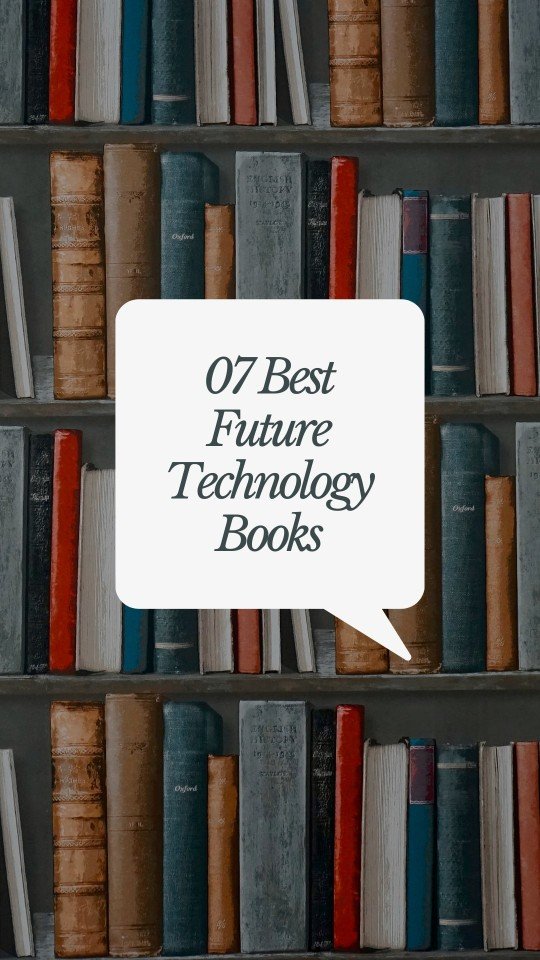If you’re eager to learn more about best Future Technology books you’ve come to the right place. Reading books helps us remember many points, and separate notes are often made for easy recall.
Here, you’ll be introduced to 07 best Future Technology books that can be quite beneficial for you. They can not only improve your career but also assist you in your studies.
Technology has enveloped us from every direction, and now, no business can be conducted without it. This is because it’s such an innovation that vast amounts of information can be stored in a tiny chip.
Thanks to technology, you can easily conduct bank transactions, track anyone, conduct interviews or arrange meetings via video conference, and keep track of employee records or extract data from anyone’s mobile or any individual with ease.
These books are recommended by Experts. Here are 07 best essential technology books you should read.
1. The Future is Faster than you think
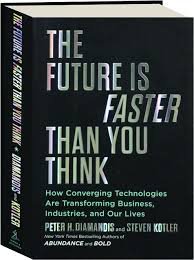
In this book “The Future is Faster Than You Think,” Peter Diamand is and Steven Kotler explore how rapidly advancing technology and new innovations are shaping a new era for our society.
Based on previous work on book, “according to author researched, technology like AI, robotics, blockchain how they are poised to revolutionize industries across the board.
They emphasize unprecedented acceleration, foreseeing more change in the next decade than the past hundred years.
This insightful guide offers a roadmap to navigate these fast-paced changes, making it essential reading for leaders, entrepreneurs, and anyone curious about the future of technology and society.
| Key Information | Details |
|---|---|
| Book Title | The Future Is Faster Than You Think |
| Authors | Peter Diamandis and Steven Kotler |
| Previous Works | Abundance, Bold |
| Overview | Practical playbook for technological convergence in the modern era, exploring rapid technological advancements and their transformative impact on society. |
| Key Technologies | AI, robotics, virtual reality, digital biology, sensors, 3D printing, blockchain, global gigabit networks |
| Focus Areas | Transportation, retail, advertising, education, health, entertainment, food, finance |
| Forecast | More upheaval and wealth creation in the next decade than the past hundred years. |
| Reviews | – Ray Kurzweil: Guidebook for leaders, entrepreneurs, CEOs. – Tony Robbins: Clear vision for CEOs and entrepreneurs. <br> – Anousheh Ansari: Offers a hopeful vision of the future. – Pharrell Williams: Insightful view of the road ahead for entrepreneurs and leaders. – Kirkus Reviews: Enthusiastic look at future technologies. – Inc’s “New Business Books You Need to Read in 2020”: Intriguing speculation on technological convergence. – Blogging on Business: Important contribution to thought leadership. – Inside Higher Ed: Exciting discussion on new technologies. – Book Pal: Logical arguments for technological advances. |
| Author Information | – Peter H. Diamandis: Cofounder of Singularity University, Human Longevity, Inc., Celularity, Inc., and Bold Capital Partners. Founder and Executive Chairman of XPRIZE. Degrees in molecular genetics and aerospace engineering from MIT and an MD from Harvard Medical School. <br> – Steven Kotler: Founder and executive director of the Flow Research Collective. Author of several bestselling books, translated into over forty languages. Nominated for two Pulitzer Prizes. |
| Recommended For | Entrepreneurs, CEOs, leaders, and anyone interested in understanding the transformative impact of technology on various industries. |
| Reading Level | Intermediate to Advanced |
| Key Takeaways | – Understand the impact of exponential technologies. – Explore the convergence of technologies. – Discover transformation in daily life, education, healthcare, etc. – Learn about potential aerial rideshares and urban aviation by 2030. |
2. Competing in the Age of AI
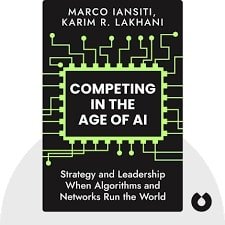
According to The New York Times, “a provocative new book” AI-centric businesses have a new operating architecture that redefines their methods for producing, capturing, sharing, and delivering value.
Scale, breadth, and learning limitations that have impeded business growth for centuries can be eliminated by reimagining the company around data, analytics, and artificial intelligence (AI), as demonstrated by Marco Iansiti and Karim R. Lakhani.
Research demonstrates how AI-driven processes are significantly more scalable than traditional processes, allow for a massive scope increase, enabling businesses to cross industry boundaries, and create potent learning opportunities—to drive ever-more accurate, complex, and sophisticated predictions.
Examples of these companies include Ant Financial, Microsoft, Amazon, and Airbnb. When conventional operational limitations are eliminated, strategy transforms into a completely other game, the rules of which and their probable results are explained in this book.
Iansiti and Lakhani offer a framework for reconsidering operational and business approaches. Describe how “collisions” between traditional/analog and AI-driven/digital businesses are changing our economy’s structure, causing traditional businesses to rethink their business strategies, and reconfiguring competition.
Describe the hazards and opportunities that digital enterprises bring. Describe the increased duties and difficulties facing executives of traditional and digital businesses.
Based on research in hundreds of businesses across numerous industries and jam-packed with examples, many of which come from the most formidable and creative global competitors driven by AI, this is your indispensable manual for reevaluating how your business competes and runs in the age of AI.
| Key Information | Details |
|---|---|
| Book Title | AI-centric organizations exhibit a new operating architecture, redefining how they create, capture, share, and deliver value |
| Bestseller Status | “A provocative new book” — The New York Times |
| Authors | Marco Iansiti and Karim R. Lakhani |
| Recommended Audience | – Business professionals and executives navigating the era of AI – Intermediate to Advanced readers |
| Key Points | – Understand how AI is reshaping business models and competition – Learn about the value of AI-driven processes and their scalability – Discover the challenges and opportunities in the era of AI – Explore the impact of digital operating models on traditional businesses – Gain insights into competitive advantages and network effects in digital business models |
| Book Content Highlights | – Present a framework for rethinking business and operating models – Explain how “collisions” between AI-driven/digital and traditional/analog firms are reshaping competition, altering the structure of our economy, and forcing traditional companies to rearchitect their operating models – Explain the opportunities and risks created by digital firms – Describe the new challenges and responsibilities for the leaders of both digital and traditional firms – Packed with examples from powerful and innovative global, AI-driven competitors – Based on research in hundreds of firms across many sectors |
3. AI Superpowers
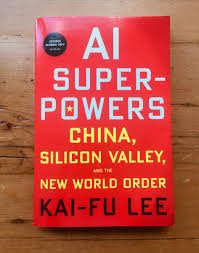
In this book you will lean how ai is reshaping business models and competition. you will also lean how ai driven processes offer scalability and scope that traditional methods lack.
This book illustrates , a framework is given to rethink business models in the digital era and highlighted the challenges and opportunities AI presents for both digital and traditional firms.
This book is recommended for business professionals and executives navigating the transformative impact of AI on various industries.
| Key Information | Details |
|---|---|
| Title | AI Superpowers: China, Silicon Valley, and the New World Order |
| Author | Kai-Fu Lee |
| Reviews | “Kai-Fu Lee believes China will be the next tech-innovation superpower…Lee argues powerfully that because of the unprecedented developments in AI, dramatic changes will be happening much sooner than many of us expected.” —New York Magazine |
| Recommended Audience | Tech enthusiasts, AI professionals, policymakers |
| Reading Level | Intermediate to Advanced |
| Bestseller Lists | THE NEW YORK TIMES, USA TODAY, AND WALL STREET JOURNAL BESTSELLER |
| Key Takeaways | – Understand the competitive landscape of AI in the US and China. <br> – Learn about the evolution of AI techniques and their impact on jobs. <br> – Realize the importance of data privacy in AI development. <br> – Explore the differences in entrepreneurial environments between the US and China. <br> – Consider the potential societal impacts of AI advancements. |
4. The Five Forces That Change Everything

In this era without technology and its power you can not do any business to promote and do anything, in this book you will know how technology affect your lives, politics, and society.
So this book will help you, what is relationship between technology and the evolution of humans. you will be able to explore the potential consequences of humans interacting with robots, the impact that intelligent computer programmes could have on humanity, and the potential for brain-computer interfaces.
Furthermore, you will know the frontiers of science and innovation, from humanoid robots developed in Japan and biohacking in Silicon Valley to the creation of human-monkey chimeras in Chinese labs.
There are five key major points are described in this book: Mass Connectivity, Bio Convergence, Human Expansionism, Deep Automation, and Intelligence Explosion.
| Key Information | Details |
|---|---|
| Mass Connectivity | Explores brain chips connecting minds to the internet. Discusses potential benefits like boosting IQs, memory exchange, and thought communication, as well as concerns like privacy invasion, identity hacking, and government control. |
| Bio Convergence | Discusses decoding life’s building blocks, creating new lifeforms, conquering diseases, resurrecting extinct species, DNA editing, and creating intelligent beings. |
| Human Expansionism | Explores the possibility of colonizing Mars, extending human reach beyond the solar system, and the impacts of technologies like space travel, new materials, and nanotech on civilization. |
| Deep Automation | Examines the effects of machines performing tasks more efficiently, the delegation of important decisions to algorithms, and potential machine-led control over economies, corporations, and daily lives. |
| Intelligence Explosion | Discusses the creation of superintelligent machines surpassing human capabilities, potential control issues, and the outcomes of this evolution, including the elimination of hunger, disease, poverty, and war, or potential loss of human control. |
| Recommended Audience | Entrepreneurs, Innovators, Tech Enthusiasts. Intermediate to Advanced readers. |
| Benefits for Readers | – Explore the impact of technology on humanity.<br>- Understand the trajectory of future technologies.<br>- Shape investment strategies based on future developments.<br>- Learn about nanotechnology, transhumanism, space exploration, supercomputers, brain-computer interfaces, bio convergence, human expansionism, deep automation, and intelligence explosion. |
5. AI 2041
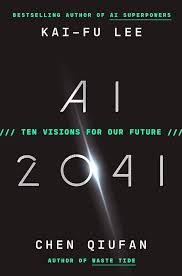
| Key Information | Details |
|---|---|
| Book Title | AI 2041 |
| Authors | Kai-Fu Lee and Chen Qiufan |
| Recognition | Named a best book of the year by The Wall Street Journal, The Washington Post, and Financial Times. |
| Reviews | Praised by industry leaders including Ray Dalio, Satya Nadella, Arianna Huffington, Marc Benioff, Mark Cuban, and Yann LeCun. |
| Authors’ Background | Kai-Fu Lee: CEO of Sinovation Ventures, former president of Google China, and author of AI Superpowers. Chen Qiufan: Award-winning author and president of the World Chinese Science Fiction Association. |
| Book Excerpt | Discusses the differences between human and computer intelligence, the advancements in language models like GPT-3, and the challenges of achieving artificial general intelligence (AGI) by 2041. |
| Target Audience | Tech enthusiasts, AI researchers, futurists. Intermediate to Advanced readers. |
| Key Takeaways | – Imagine a future shaped by AI technologies. <br>- Understand the potential benefits and harms of AI. <br>- Explore AI’s intersection with human creativity and critical thinking. <br>- Envision a symbiotic relationship between humans and AI. <br>- Grasp AI’s evolving role in transforming daily tasks. |
6. The Exponential Age
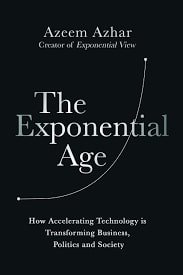
In this era everyone wants a exponential growth with technology alongwith advancements. Azeem Azhar offers a roadmap for understanding and addressing this disparity, proposing policy solutions to navigate the challenges and opportunities presented by the rapid evolution of technology.
Exploring the Exponential Gap
In the era of technology author describe the power of “Exponential Gap”. You will explore in this section how rapid technological advancements outpace societal readiness, leading to a host of contemporary challenges.
Charting the Course of Technological Evolution
Azeem Azhar, who is known as a revered technology analyst, paints a vivid picture of the future shaped by AI, automation, and other exponential innovations.
Most of people who are in technology field want to discover how his insights transcend observation, offering a roadmap for navigating the uncharted waters of the exponential age.
Bridging the Gap: Proposing Policy Solutions
Not only Azhar doesn’t just analyze the exponential gap but also he offers tangible solutions to bridge it.
His ideas for policies show ways to make technology work better with our lives, making things fairer and keeping things going smoothly for the long term.
Joining the Conversation: Empowering Every Individual
The aim of this book isn’t just for policymakers and tech enthusiasts; now it’s time to take action for every individual who is intrigued by the societal impact of innovation.
Now if you want to know the exponential view through engaging prose and insightful analysis, you have to become an active participant in shaping our collective destiny.
| Key Information | Details |
|---|---|
| Title | 2021 Financial Times Best Book of the Year |
| Description | A bold exploration and call-to-arms over the widening gap between AI, automation, and big data—and our ability to deal with its effects. We are living in the first exponential age. High-tech innovations are created at dazzling speeds; technological forces we barely understand remake our homes and workplaces; centuries-old tenets of politics and economics are upturned by new technologies. It all points to a world that is getting faster at a dizzying pace. |
| Author | Azeem Azhar, renowned technology analyst and host of the Exponential View podcast |
| Analysis | Azhar roots his analysis in the idea of an “exponential gap” where technological developments rapidly outpace society’s ability to catch up. He explains how this gap explains many contemporary problems, offering policy solutions to prevent its negative impacts. |
| Recommended Audience | Technology professionals, policymakers, and individuals interested in the societal impacts of technology. Intermediate to Advanced readers. |
| What You Will Learn | Understand the concept of exponential gap and its impact on society. Discover how AI, automation, and other technologies are rapidly evolving. Learn about the policy solutions proposed to address the exponential gap. Explore the transformative power of exponential technologies. Understand the positive and negative impacts of rapid technological changes. |
7. Blockchain Revolution
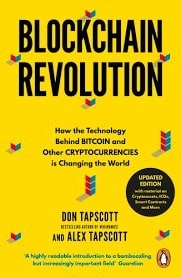
In today world everyone want to know powering of future, so in this context i will guide you the best and well researched book which describe you the power of block chaing technology which is future of technology.
In this book you will learn how it fuels cryptocurrencies and transforms industries. From secure transactions to transparent record-keeping, understand its impact on art, finance, and beyond. Ideal for anyone curious about the future of technology.
Blockchain is like a super-safe and clear way to keep track of things and trade online. It’s the special tech behind digital money like Bitcoin and cool websites like Ethereum.
This book by Don Tapscott, a famous writer, and his son Alex Tapscott tells us all about it.
Imagine a magical book where everyone can write down important stuff, like birth certificates or even who owns a piece of land. That’s kind of what blockchain does, but online and super safe.
It’s not just for money; it can help artists sell their art, let people know where their food comes from, or help families send money to each other without high fees.
| Key Information | Details |
|---|---|
| Overview | Blockchain technology is shaping the future, powering cryptocurrencies like Bitcoin, Facebook’s Libra, platforms like Ethereum, and companies like Ripple. |
| Authors | Don Tapscott, bestselling author of Wikinomics, and blockchain expert Alex Tapscott. |
| Book Description | A brilliantly researched, highly readable book about the technology driving the future of the economy. It explores the revolutionary protocol of blockchain that ensures anonymous and secure transactions through a tamper-proof public ledger. |
| Potential Applications | – Beyond digital currencies, blockchain can record everything of value, including birth and death certificates, insurance claims, land titles, and votes.<br>- Essential for artists monetizing their work, consumers seeking transparency in product sourcing, immigrants sending remittances without high fees, and entrepreneurs exploring new business platforms. |
| Impact | Blockchain technology will bring significant paradigm shifts, creating winners and losers in various sectors. |
| Audience | Recommended for business professionals and individuals interested in the transformative potential of blockchain technology. Suitable for beginner to intermediate readers. |
For more information about these books you can click here.

